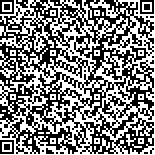下载中心
优秀审稿专家
优秀论文
相关链接
摘要

提出一种基于贝叶斯理论和马尔科夫随机场MRF(Markov Random Fields)的主被动遥感数据协同分类方法。该方法依据光学与微波遥感数据在地物提取中的各自优势,首先对ASAR后向散射系数进行入射角归一化,然后构建一种基于贝叶斯理论和MRF的分类器,以归一化后的ASAR双极化数据与TM7个波段共同参与分类。分别对ASAR入射角归一化的有效性和主被动协同的必要性进行验证,结果表明,采用本文方法的分类精度达到89.4%,较未进行角度校正的主被动数据协同分类的精度提高了4.1%,较单独TM分类的精度提高了11.5%,体现出主被动遥感数据协同在分类上的潜力。
关键词:
主被动遥感 入射角归一化 贝叶斯理论 马尔科夫随机场(MRF)The iterative technique for multi-source remote sensing data classification is presented in accordance with the advantages of multi-source data in feature extraction. In the method, the Advanced Synthetic Aperture Radar (ASAR) backscatter coefficient is normalized by the incident angle at first. Then, a classifier based on the Bayesian theory and Markov random fields (MRF) is developed, and the Vertical-Vertical, Vertical-Horizontal (VV, VH) polarizations of ASAR and all the seven TM bands are used as inputs of the classifier to get the class labels of each pixel of the images. Finally, the method is validate, the necessities of normalization and integration of TM and ASAR are discussed. The results show that the precision of classification in this paper is 89.4%, which is increased by 4.1% and 11.5% compared with the methods of without normalization and using single TM data. These analyses illustrate that synthesis of multi-souce remote sensing data is an efficient classification method.

